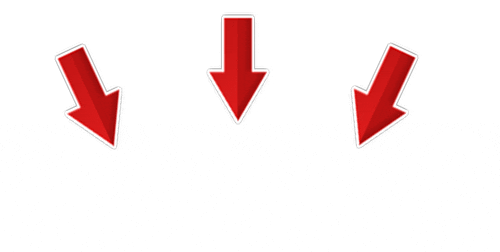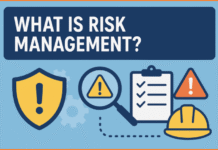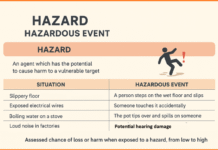Contents
POLYMER PLANT
In the organic chemistry certain giant molecules such as starch, rubber, plastic or resin, synthetic fibres, cellulose, proteins are called polymers and plants manufacturing them are polymer plants. Thus rubber manufacturing plant, synthetic yarn (nylon Terylene etc.) unit, plastic, resin or silicon making factory or a starch manufacturing factory can be called a polymer plant.
The polymer (bigger) molecules are built up of smaller units joined together and form a repeating structure. The repeating structure or the recurring unit in a given molecule is called the monomer, and the entire molecule composed of several such reporting units is called a polymer. Thus we can say that rubber is a polymer of isoprene, starch of α-glucose and cellulose of β-glucose.
The polymerization process is of three types (1) Addition polymerization, the combination of monomers either of the same kind or different kind by a process of addition involving no loss of fragments, for example, ethylene-> polythene.
(2) Copolymerization involves two different types of monomers, for example, vinyl chloride with vinyl acetate.
(3) Condensation polymerization means the combination of monomers by a process involving loss of a simple fragment or a molecule of water. The terminal units of the polymer chain may be different from the units inside. For example, polyester from a Di-alcohol and Di-acid.
The alkyd resins are such polymers obtained from phthalic acid and glycol or glycerol. Linear polymers are thermoplastic and cross-linked polymers are thermoplastic and cross-linked polymers are thermosetting.
Proteins, starch and cellulosic fibres, plastics and resins are used to make thousands of industrial products.
Hazards and Controls: POLYMER PLANT
Mostly the polymerization processes are carried out in a tally enclosed system and therefore the hazards are reduced too much extent. Machinery is also mostly enclosed. The hazards are possible from exposure to raw materials, leakage and spillage, busts and fumes hot surfaces and radiant heat, noise and vibration,and heat and humidity.
Chemicals like formaldehyde and caprolactam cause burning in eyes, nose and throat.High temperature and pressure of thermic fluid (e.g Dowtherm) in oil heating system may cause burn and sometimes fire.
Extrusion machines have hot surfaces which need insulation to prevent burn injury and hopper feeder to prevent hand contact with screw conveyor inside. Cutting machines for plastic, rubber ‘and other hard substances need safety guard on cutting blade and machine drives. Charging of toxic materials (powder or liquid) need enclosed system with local and room exhaust-fans and necessary respirators.
Polyamides used to manufacture epoxy resin are skin irritant. Acrylonitrile used in polyacrylonitrile (PAC or acrylic) fibre is toxic, skin irritant and carcinogenic. This effect was noticed in polymerization workers. Another chemical dimethylformamide (DMF) causes digestive effects, abdominal pain, skin effect and pancreatitis to workers exposed to it. (e.g. spinning bath and solvent tanks).
Styrene monomer, acetone (used in cleaning) and organic peroxide catalysts used in making polyester resins may cause fire and explosion. Styrene vapour may cause narcosis (effects on head, nose and throat).
To control such vapour, dilution ventilation and spray booth are necessary. TLV is more critical than the LEL of styrene. (Styrene monomer-phenylephrine or vinyl benzyl – C8H8, TLV 50 ppm or 215 mg/m3 STEL 100ppm or 425 mg/m3, LEL 1.1%, UEL 6.1%, PF-33Degree centigrade, VD 3.6, poison via oral , ivn). The inhalation dose of styrene can be measured by analysis of exhaled air (gas chromatography).
CLICK HERE FOR? VIZAG GAS LEAK
Solvent storage should be kept away, covered metal containers should be used to collect solvent wastes, electric fitting should be flameproof and smoking must be prohibited. Direct contact of peroxide catalysts should be avoided. Neoprene or plastic gloves are not affected by solvents.
Itching from fibrous glass particles can be minimized by good housekeeping, ventilation, use of long sleeves, barrier creams and frequent washing with soap and water.
Ethylene, propylene and other olefin members to make polyolefin’s (polymer) are weak anesthetics at a concentration above 60%. Freezing burns due to liquid propylene and hyperplasia due to prolonged exposure to diolefins have been reported. Aluminum alkyls are flammable in air and explosive in water, their fumes may cause lung damage and in solution it causes burns. Adequate body PPE should be given to workers.
Ethylene, propylene and butylenes are gases at room temperature, highly flammable or explosive when mixed with air or oxygen and large fires of olefins are difficult to extinguish. In case of fire, there supply should be stopped, fire should be allowed to burn out and adjacent structures be cooled by water. Small fires may be controlled with CO2 or DCP extinguishers.
Polystyrene is made by polymerization of styrene and other monomers. They are flammable. The polymerization process is highly exothermic and a controlled reaction may reach the osive stage. Cooling and pressure relief device on vessels are essential. Foamed polystyrene is also flammable. Most of the chemicals are toxic.
Therefore leakage should be prevented by quick maintenance and enclosed system. Female workers exposed to polystyrene production showed disturbed menstrual cycles, sexual activity, disturbed pregnancy and child birth. Biological indicators are blood styrene level and styrene metabolites in urine. Polystyrene dust may cause weight loss and erythrocyte, leucocyte or hepatic changes.
The polystyrene process should be fully enclosed, automated or remote-controlled. Manual handling should be replaced by mechanical one, leakage should be stopped, local exhaust ventilation on air contamination, respiratory and other PPE to the workers and their medical examinations are necessary.
In making various types of synthetic rubbers, solvents like hexane, styrene, butadiene, chloroprene, acrylonitrile, toluene di-isocyanate (TDI),and other isocyanates in making elastomers, ethylene dichloride (EDC), methyl chloride, ethylene, propylene, etc. are used.
Safety measures are required depending on properties of these dangerous chemicals, their splashes and leakage, pressure release, machine parts, entry into vessels, cuts and burns, fall from height and on the floor.
Health hazards are possible in handling raw rubber containing extender oil and carbon black. During fire CO hazard is also possible.
Worker should be made aware of all time hazards and properly trained. Gas detectors with alarm, welding permit, and vessel entry permit, exposure protection, hearing protection and washing facilities are also required.
SHARE WITH YOUR FRIENDS






